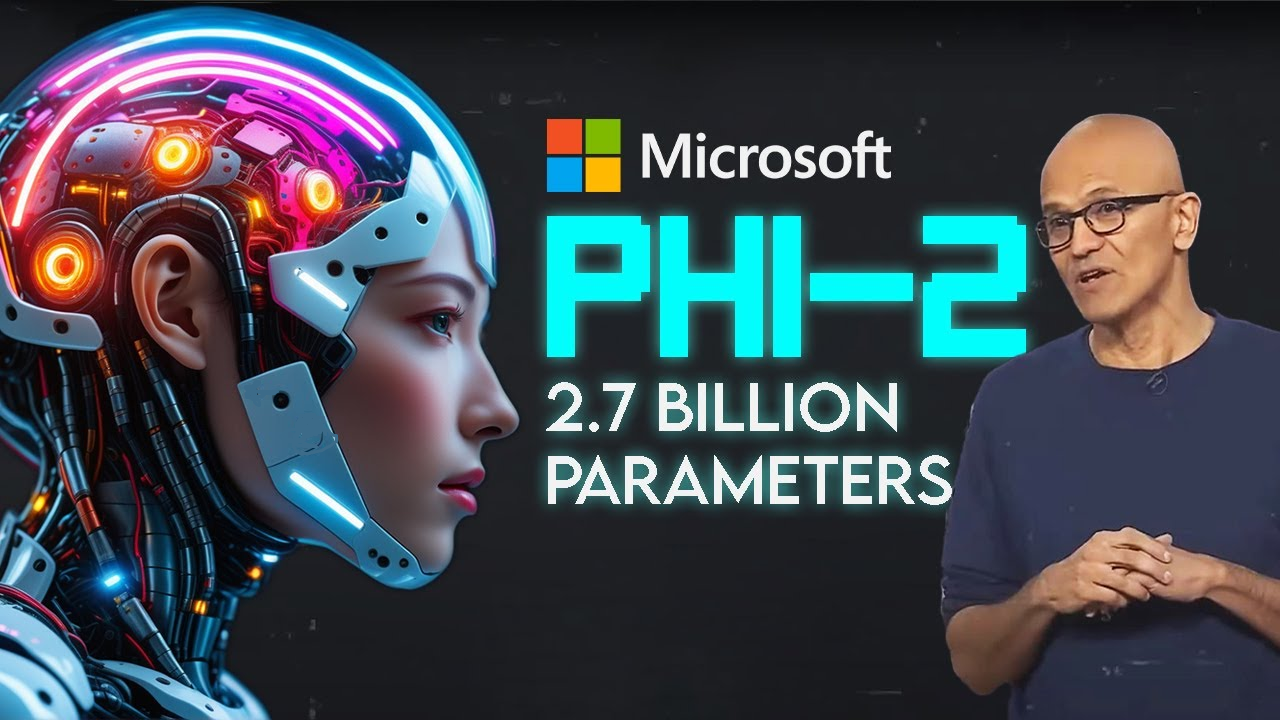microsoft phil spencer
Microsofts New AI Phi-2 Just 2B Parameters Outperform Llama 2-7B Mistral !
Microsoft has just announced the launch of Phi 2, one of the smallest and most powerful language models in the world. It is a 2.7 billion parameter model that beats some of the much bigger language models out there like Google’s Gemini Nano 2 and Metasllama 27B. In this video, we will dive deep into Phi 2, exploring its technical innovations, practical uses and the broader impact it could have on AI’s future.
But before we proceed, remember to subscribe and hit the notification bell to stay updated on my latest videos. Alright, so Phi 2 is Microsoft’s latest small language model in the Phi series that builds on its earlier versions Phi 1 and Phi 1.5, but it’s better in size and performance. Phi 1 came out in June 2023 as a model with 1 billion parameters capable of writing coherent text in many languages.
It learned from a huge dataset called Common Crawl, which had tons of web text. Then, Phi 1.5 was released in September 2023, an upgrade of Phi 1. It used a more varied dataset called WebTextPlus, featuring texts from news, social media, books and Wikipedia. Phi 2 aims to be even better than the earlier models.
It stands out in two ways. First, it can create realistic images from text descriptions, a unique feature among small language models. Second, it improves itself by learning from different sources like books, Wikipedia, code and scientific papers.
Looking at different language models, we see that Phi 2, despite having only half the parameters compared to models like Lama 2 and Mistral, still performs better in benchmarks. Lama 2.7b, Mistral and Gemini Nano 2 all have 7 billion parameters and use the Common Crawl dataset. Mistral also includes additional data from WebTextPlus, Wikipedia, books, news articles, social media posts, code repositories, scientific papers and various book-related content.
It scores 0.95 on the Topper Scale, higher than Lama 2’s 0.9 and Gemini Nano 2’s 0.8. Phi 1, with 1 billion parameters from Common Crawl, doesn’t have a Topper Score mentioned. Phi 1.5 includes knowledge transfer, but its details aren’t specified. Despite having fewer parameters, Phi 2 outshines these models.
This indicates that Phi 2 is not only more compact, but also more efficient and adaptable than other small language models. It’s capable of producing high-quality text and handling various language tasks with fewer resources and less time. Now, Phi 2 has some amazing abilities, thanks to a few key technical advances.
Let’s talk about what makes Phi 2 special. First of all, Phi 2 has a unique way of working that uses text-to-image synthesis. This means it can create lifelike, varied pictures from just a text description.
Next, Phi 2 uses a top-notch training method called Textual Knowledge Transfer. This helps it learn better and handle a wider range of tasks. It can take in information from many sources, like books, Wikipedia, code repositories and scientific papers, and add it to what it already knows, which gives it an edge over other SLMs, allowing it to deal with more complex and varied challenges.
Textual Knowledge Transfer is about learning from outside data that wasn’t part of the original training. If Phi 1 only learned from common crawl, it might struggle with tasks needing specific knowledge or facts. But if it’s trained on WebTextPlus and also learns from other sources, it can access more info and do better.
This method is great for SLMs because they often work with language tasks that need a lot of context and smart thinking. For instance, an SLM might need to summarize a news article, answer a question, or write a product description. To do this well, it needs a wide and deep understanding of the world and language.
Now, Microsoft developed ways to help SLMs with Textual Knowledge Transfer. One way is knowledge distillation, which means taking the knowledge from a big model and fitting it into a smaller one. For example, if Phi 1 learned from a huge amount of data and had billions of parameters, it would be big and costly to use.
But if we can transfer its knowledge to a smaller SLM, like Phi 2, we can keep the performance high, without the big cost. Another way is knowledge augmentation, which means adding new data to an existing model to make it perform better or no more. For instance, if Phi 1 learned from a lot of data but didn’t know much about books or Wikipedia, it would be limited in what it can do.
But if we add info from these sources to the data it learned from, Phi 2 can benefit and become more capable. Microsoft has shown these methods work well with their own data and tasks. They’ve proven that Textual Knowledge Transfer can greatly improve Phi 2’s performance on different tests, where it achieved the best results compared to other models.
I’ve been saying how great Phi 2 is because it’s built in a special way and trained using advanced techniques. But the cool part is all the things you can do with it. Basically, it does everything a big language model can do, but it needs less computer power and costs less.
That’s what makes it really stand out. Alright, so, what’s your take on Phi 2? Drop your thoughts and ideas in the comments. If you found this information helpful and want to stay in the loop with more insights into the ever-evolving world of AI, don’t forget to subscribe and give this article a thumbs up.
Your support helps us bring more content like this to you. Thanks for watching, and see you in the next one.
Microsoft phil spencer
Microsoft phil spencer
Also read:- Googles Gemini Pro is Now Available via API

1 thought on “Microsoft phil spencer New AI Phi-2 Just 2B Parameters Outperform Llama 2-7B Mistral !”